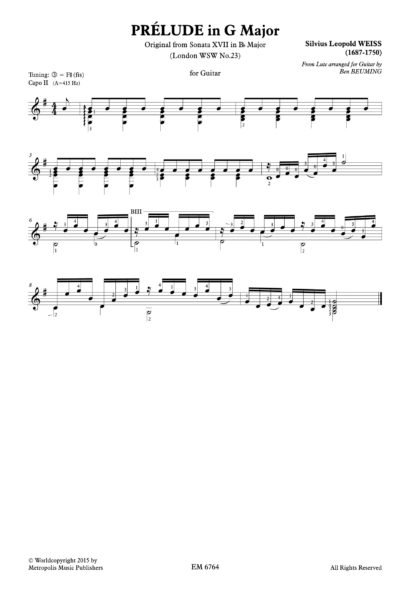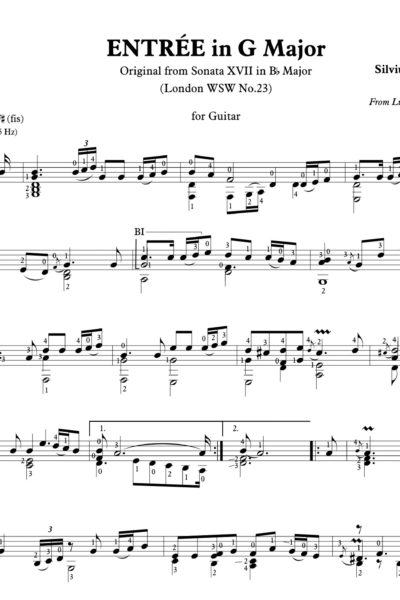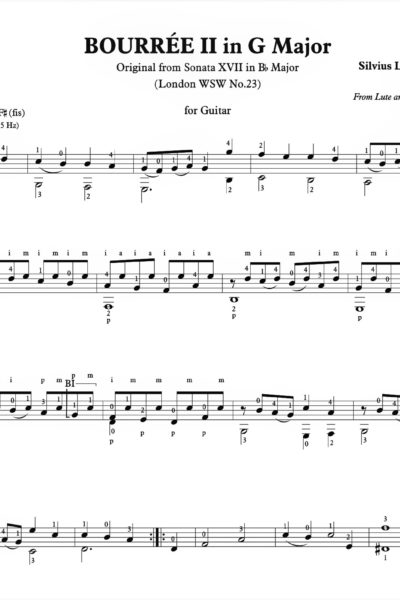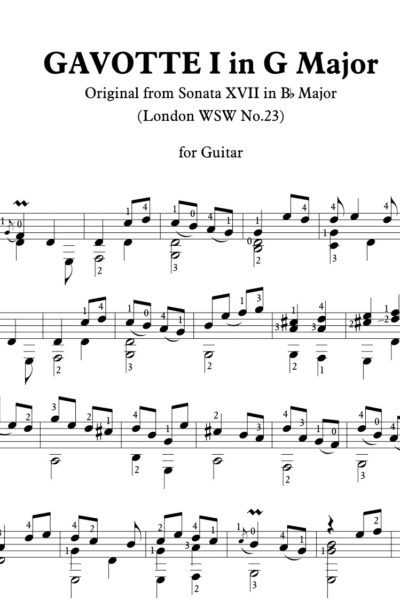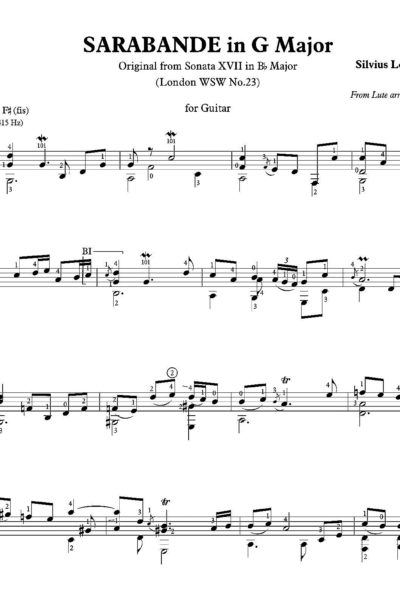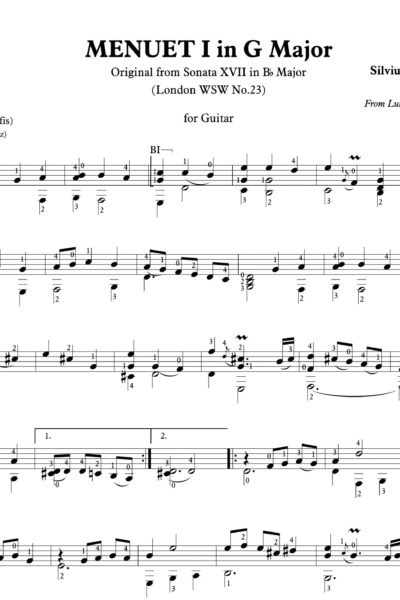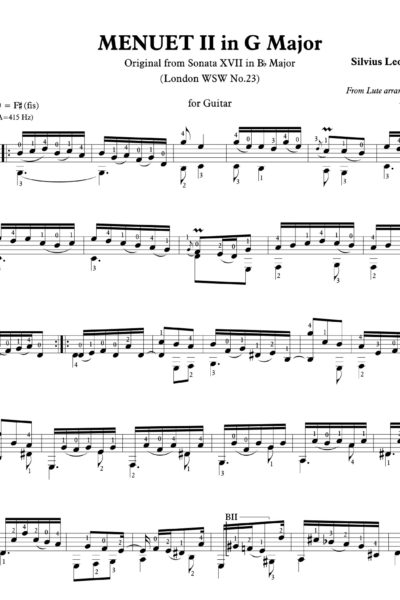Sonata XVII (WSW 23)
Sonata XVII comes from Weiss’s middle ‘productive’ period, thought to have taken place between 1719 and 1725. The original tablature manuscript is in the British Library (London Ms. Add. 30387). It is the only London Sonata with a title: Divertimento à solo. The Sonata has ten separate movements: Prelude (Prǣlude), Entrée, Bourée I & II, Gavotte I & II, Sarabande, Menuet I & II, and Saltarella. The Entrée is nothing more than an Allemande. The Saltarella resembles the Scottish Gigue. The pairs of the middle ‘dances’ are intended to be played side by side, as one coherent movement in which the second part complements the musical notion of the first part. There are concordant copies of the first parts of the Bourée, Gavotte and Menuet in the Sächsisches Landesbibliothek in Dresden (Suite XXVI). Bourée I can also be found in the Bayerische Staatsbibliohtek in München, although it is quite different from the London version.
Originally, the Sonata is written in B flat major, a key often used by Weiss as it is appropriate for playing the lute, but rather awkward with the guitar. For ease and effectiveness of playing, I have transposed the Sonata a minor third lower to G major. To create more concordance with the baroque tuning of the lute, the G string is lowered by a semitone to F sharp.
